Edited by KEN CHRYSLER
kenchrysler@yahoo.ca
Welcome to CRO Modellers Corner for the month of September.
As always, this department is here to promote Canadian prototype railway modelling. Let’s look at what that means, word by word.
First of all, “Canadian”. That should be obvious, Canadian meaning: pertaining to railways in Canada. For our purposes, my definition of “Canadian” prototype will be any railway that is found to be or have been located physically within the borders of Canada, whether that railroad is a Canadian corporation, or a foreign owned. That said, most railroads from the United States have had a presence in our country one way or another, therefore from time to time, we will look at American prototype models as well. For example, if you model CP or CN, no matter if the steam era, first generation diesel transition, or modern, the freight consists almost always have some American road cars, and of course in the 1950’s U.S. steam (Rutland, D&H, NYC, etc), operated in Canada, and U.S. diesels have as well for over 60 years. For now, our primary focus is on Canadian railways exclusively.
Second, is Prototype. This is less obvious. Wikipedia defines the word like this: Prototype is an early sample, model or release of a product built to test a concept or process or to act as a thing to be replicated or learned from.
For our purposes we are not interested in development of a new concept or process, but are concerned with the second part of the definition, a thing to be replicated or learned from.
Third, is Railway. This term is also obvious and is interchangeable with the term railroad, however traditionally the term Railway is more often used in this country, so that is the term we will refer to most. In the United States the term Railroad is most often used. Especially since the Great Depression of the 1930's where many railways in the US went bankrupt and were reorganized as railroads to differentiate from their older corporate structures.
Lastly Modelling. No that is not a spelling mistake. In this country modeling and modeler are spelled with two L's. Modelling for our purposes refers to the recreation in miniature form something that exists or has existed in real form.
So now that we have defined our terms of use for the words Canadian prototype railway modelling lets put them all together and begin to examine fine examples of the term and strive to gather from these examples knowledge and inspiration for our own efforts to recreate our own miniature empires.
In this issue I will begin a series of articles called "How To Model From the Prototype".
We will be taking a look at one of the finest model railways that has existed… the late Richard Chrysler's 1950 interpretation of the Hagersville Subdivision of the Canadian National Railway. Though sadly it no longer is with us, except in photographs and a few scattered models, Rich's influence and inspiration is still felt by many who knew him.
As always we have our New Products section where we highlight the best and latest of the offerings for the Canadian modeler.
We are looking to develop a comprehensive listing of each and every model railway club in Canada, so if you are a club member please send me your info to be included in this list, which will be made available each month in this department going forward..
At this time I would like to invite each one of our readers to send us pictures of your modeling efforts that we may share in this department. How to articles are encouraged as well, if you are working on a project, take some photos and some notes and send it along to us. Likewise give us a tour of your layout in photos.
Please submit them to me at kenchrysler@yahoo.ca
Let us all share in this fine hobby and encourage each other to do our best.
Until next time..Keep the rails shiny!
Ken Chrysler
[No Photo of Ken]
Coming soon to a Hobby Shop near you!
BANNER GEORGES TRAINS
Atlas has posted photos of their upcoming NRE 3GS21B gensets in HO including Canadian Pacific! They are due this fall with an MSRP of $144.95 each at GEORGE'S TRAINS in Toronto. PHOTO GENSET
Maple Leaf Trains has just released their first HO locomotive model shell. The GMD-built F59PH (phase III) version, now available for the first time in HO scale. The first run is available as a kit (Undec) or decorated in GO Transit white and green. The model could be used for AMT as well. Modelling Guru “Eric Aucoin” will be reviewing the model over the next few months, with photos.
http://www.mapleleaftrains.com/
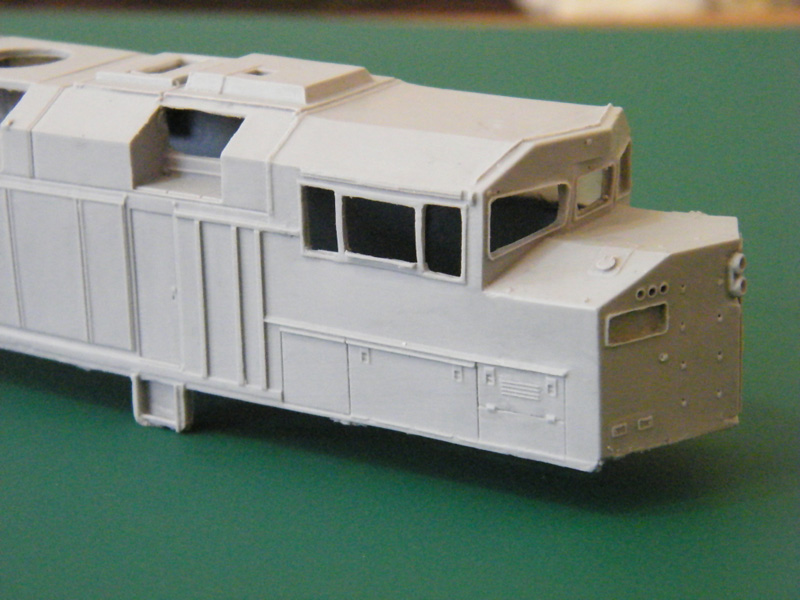
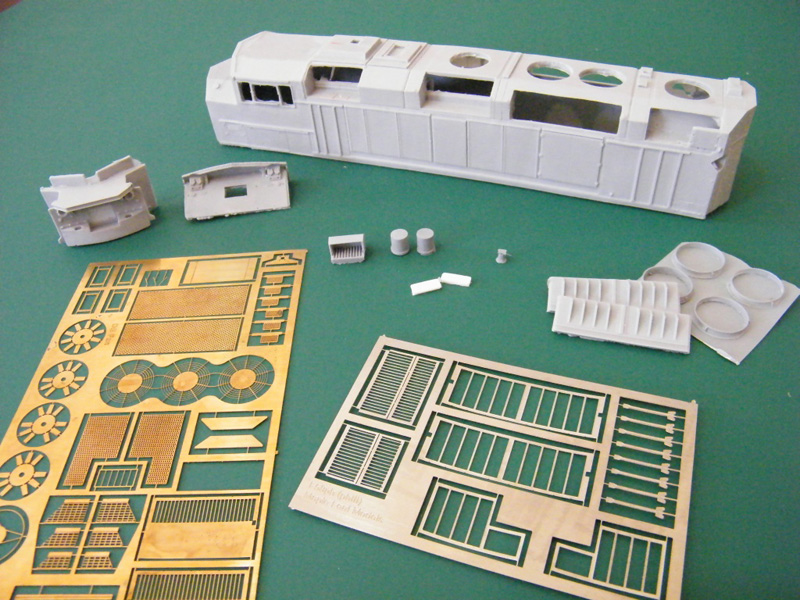
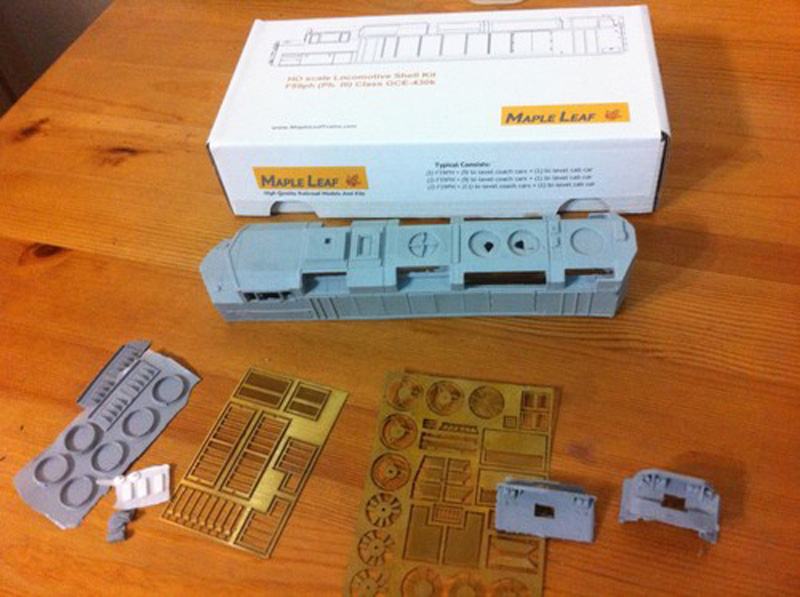
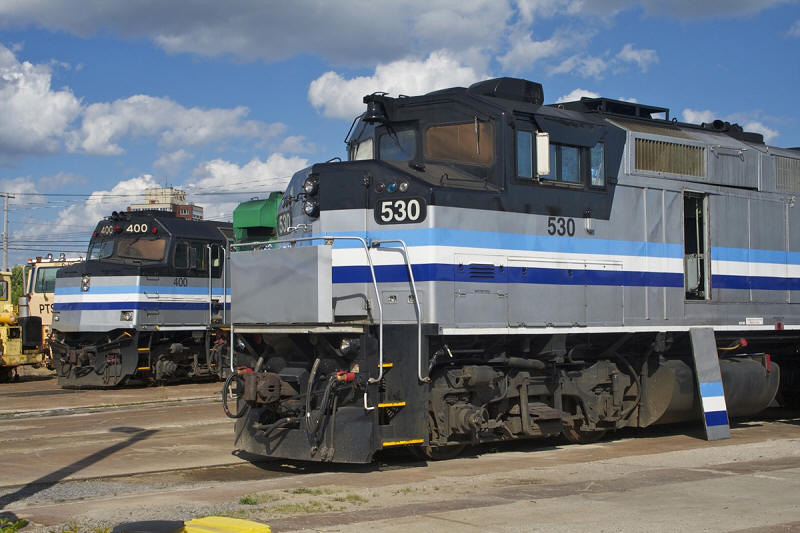
YOUR MODEL TRAIN STORE BANNER HERE
For details contact the editor: editor@canadianrailwayobservations.com
Athearn Genesis has announced the upcoming release of their GATX TankTrain models in two versions. Expected release is April 2014.
They have a !977 version with large lettering, and 1982 version with smaller lettering. These will be sold as end cars and intermediate cars so the modeller can put together a whole train. Retailing for $99.98 is a two car A/B End Set with $49.98 separately sold single intermediate cars. Athearn’s Genesis A/B End Sets will be available in both 1977 and 1982 variations. Intermediate cars to build out TankTrain consists will be offered individually with ten car numbers released for each (1977 and 1982) variation of the train. PHOTO TAK CARS
Due this fall, Bachmann's SD70ACe will retail for $275 and will feature SoundTraxx 16-bit sound and DCC digital command control. The first roadnames will be five Norfolk Southern Heritage Series offerings: Erie, Jersey Central Lines, New York Central, Virginian, and Wabash. PHOTO GREY COLORED SD70ACe CAB
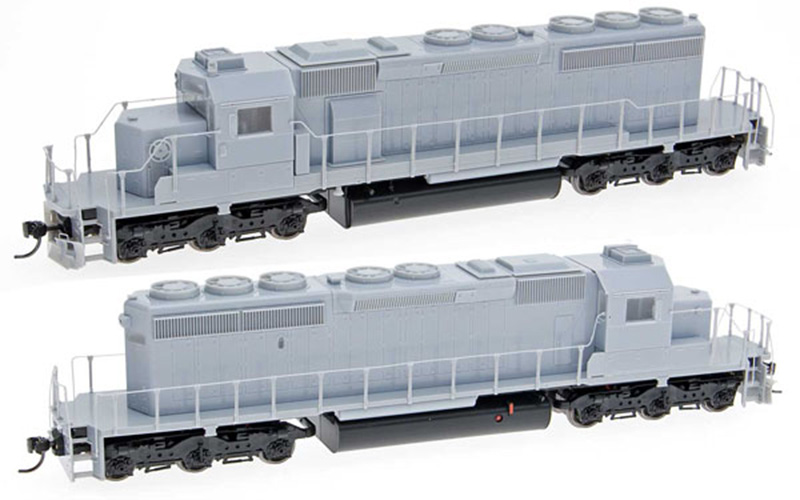
Broadway Limited's HO-scale Baldwin RF-16 A & B-unit Shark Nose project is nearing availability. B&O, D&H, New York Central, and Pennsy, plus undec examples will be available. PHOTOP PENNSYVANIA RR SHARTK NOSE
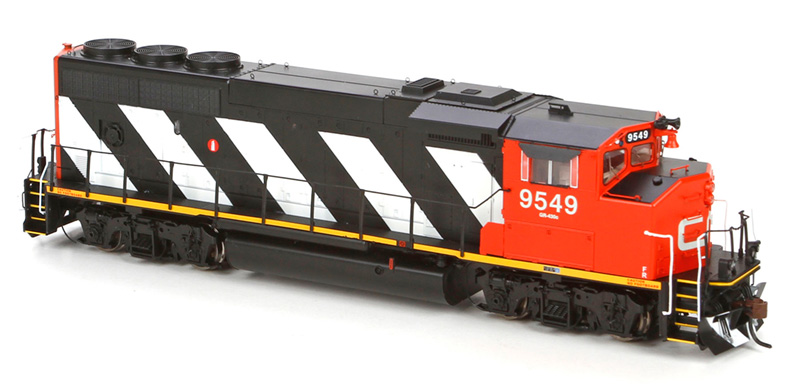
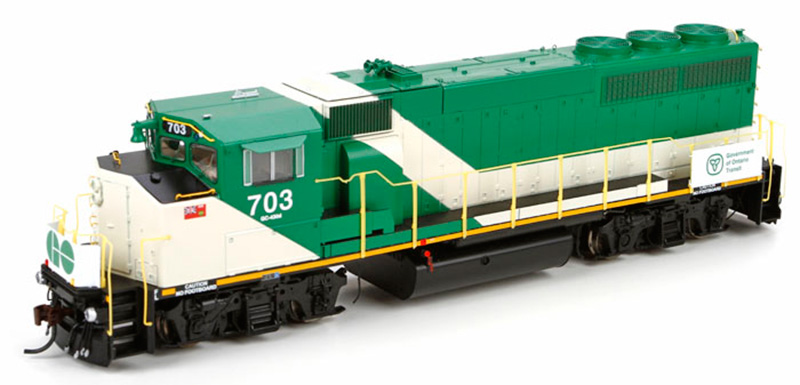
New from Tru-Line Trains is their New York Central wood caboose, which were similar to the cabooses used on the CASO Sub in Ontario. Also announced by Tru-Line Trains is the upcoming release of the Canadian Locomotive Company/Fairbanks Morse C-Liners in both freight 4-axle and Passenger 5-axle versions, these are a totally new offering with updated and more accurate details than in the past. These will be available in both CN and CP where appropriate with some American roads released first. www.truelinetrains.ca
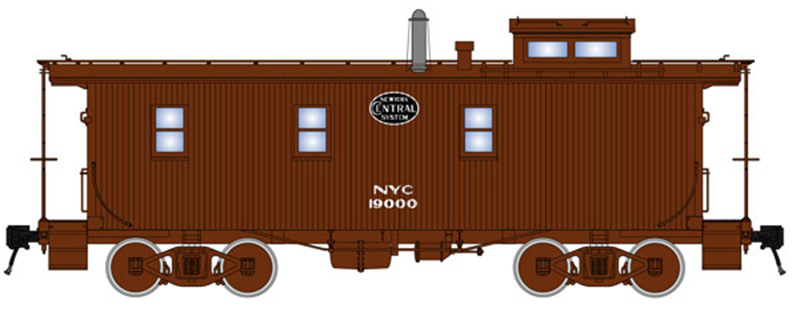
The folks at Rapido www.rapidotrains.com have been very busy as of late with many new products being announced.
First up is the new GMD-1 offered in multiple versions
Bendy Track is a new line of flex track offered in code 70 and code 83 for HO scale.
Also back is the Super Continental Line of coaches.
Announced is the Ultimate Canadian Gondola.
FP-9s are in production and are arriving.
New releases from Rapido Trains and Athearn HO scale models were displayed at SUPERTRAIN in Calgary.
Many of our readers will be familiar with the exquisite, accurate and realistic prototype modeling and weathering done by Pelle Keld Soeborg. While Pelle models the Union Pacific, he posted these photos of his Athearn Genesis CN GP38-2W which he painted weathered and detailed for a friend. He used pictures of the CN prototype and stated it was quite a challenge to make the model look like the real CN locomotive. We feel he certainly succeeded in emulating a ubiquitous and road weary Canadian National GMDD-built work horse in HO Scale.
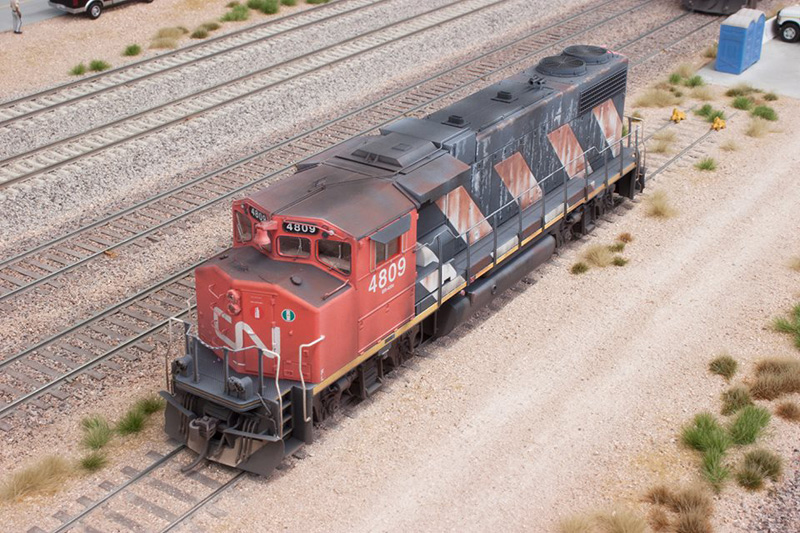
Almost done... My good friend Paul Trudel is completing his HO Scale CP RAIL E-8 (CP 1802), using a Proto-2000 with custom paint and details. TWO PHOTOS CP 1802
Steve Funney from Whitelake New York is a fine modeller in his own right. His custom painting and modelling skills are evident in his careful work.
Here are a few examples of Steve's skill.
Photo 1. Canadian National Hawker Siddley caboose.
Photo 2. CIL tankcar.
Photo 3 Central Vermont's bicentennial locomotive. GP9 1776.
Photo 4 British Columbia Railway's pressure differential hopper.
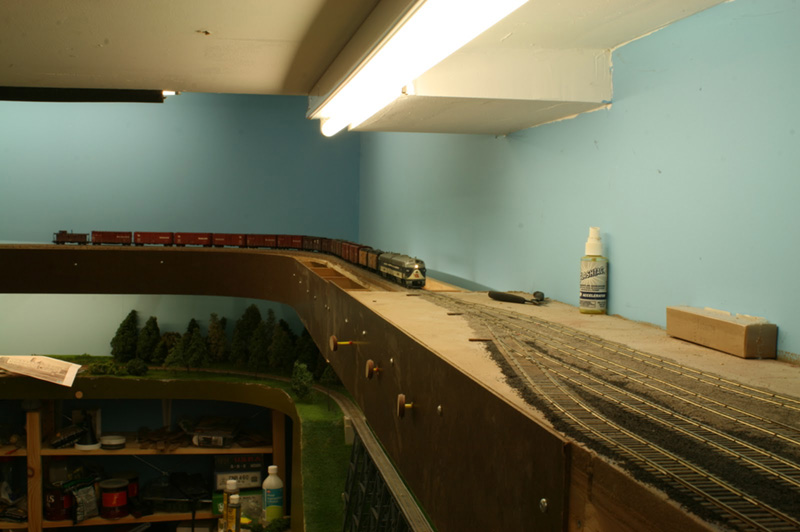
This first group of photos are from the late Rich Chrysler's Hagersville Subdivision of the Canadian National Railway circa 1950 layout.
Rich was a great modeller. His handlaid track, scratchbuilt buildings and modified brass and plastic locomotives and rolling stock were an inspiration to the many modellers who knew him. Rich's careful eye for detail resulted in a truly great model railway. Lets take a short tour of his layout, which sadly was torn up earlier this year.
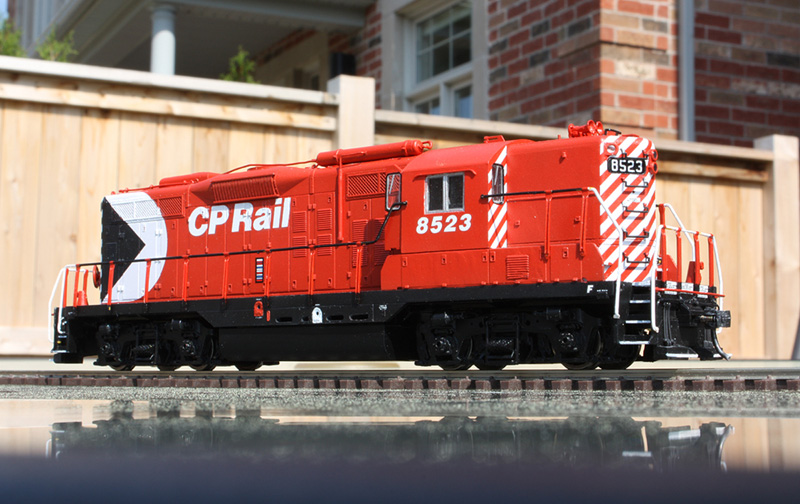

Photo 1 The Hamilton station is seen at 9: 05 am. Mixed train M-233, "The Daily Effort" to Port Rowan and Port Dover is about to leave from track 1.Rich's exquisite handlaid track is shown here with his jewel like switches.
Photo 2. Another view of the James St. station scene.
Photo 3 P5 0-8-0 number 8352, a reworked Proto 2000 locomotive works Hamilton's Ferguson Avenue freight sheds.
Photo 4 6:30 PM finds mixed train M 219 at the Caledonia station waiting for M 238 from Port Dover.
Photo 5 A gravel extra from the Hagersville and Garnet gravel quarries creeps across the Grand River bridge at Caledonia. This bridge was the limiting factor for all locomotives south of Caledonia. Nothing larger than a mogul could cross this bridge , and very slowly at that. This bridge was responsible for CNR's E-10 moguls remaining in service until the late 1950's.
Photo 6 Garnet station. This quiet little scene shows off many typical features of a lonely flagstop station. The small shelter still in Grand Trunk colours, wooden fencing and cattle guards, gravel road with timber crossing and wooden crossbucks. A small concrete bridge in the background carries Highway 6 across a small stream.
Photo 7 E-10 mogul number 909 crosses the Michigan Central/Caso diamonds at Hagersville
Modeling from the Prototype:
How To Model From the Prototype PART 1:
Part 1. How To Choose A Prototype.
Choosing a prototype to model can be a daunting task for the modeller.
Looking at the wide availability of the models and scales today , we see that there are an awful lot of beautiful products out there to choose from. Many modellers buy whatever catches their eye as products are released. Seeing the limited runs that are common today, we are tempted to snatch them up now or run the risk of being left out. However that often leads to us ending up with a confusing mixture of roadnames and eras being represented and purchasing structures that end up making our Plywood Pacific's looking a lot like everyone elses, "Oh look at how he is using the Rico station" or " There is the Atlas tower". A sort of eclectic mishmash with a bowl of spaghetti trackplan thrown in for good measure.
To avoid this trap and to hone our interest, to keep us inspired, to learn and develop, which is after all the point of having a hobby in the first place, we should ask ourselves a few questions.
First. What is it I like about trains? What was my earliest interest? What first captured my attention about trains and made me want to form a hobby around them? If we ask ourselves this first series of questions we are on our way to building our lifetime goal of a layout.
Most modellers who have been in the hobby for years often will end up modelling their first influence, so why not focus in on it now. Most of us are headed down that road anyway, so why waste our efforts and money getting sidetracked along the way.
Maybe it was seeing the last of steam, maybe it was first generation diesels in pure lashups. Maybe it was a nearby industry being switched regularly. Perhaps it is long trains with the latest power, with graffiti scarred freightcars. You find yourself driving out of your way just for the chance to be caught by a train at a grade crossing for a few moments of noisy, gritty, pounding ,rushing awesomeness as it slams by. Maybe it is that old branchline nearby that has been turned into a trail that you ride your bike on regularly. Whatever you are most curious about or find yourself thinking about the most.
Second. How do I prefer to run trains? This is a very important question, perhaps the most important to ask, as it will influence everything else. Are you a railfan that wants to stand trackside and watch a parade of trains pass on the mainline running to schedule? Or are you a switchman who likes to maneuver cars to their destination industries, happily spending an hour or more on a switching puzzle? Maybe a bit of both is to your liking? Do you want to be able to support multi participant operating sessions, or do you want to operate solo.
Third. How much space do I have available to me? This question when answered will greatly determine the type of railroad you will end up with. Will it be a large multi level railway with numerous towns, a division point , staging , yards and industries. Or will it be a small branchline operation with few trains, a town or two with a wayfreight or mixed train or two. Or do you only have space for a small shelf layout for a small switching operation.
Fourth. What is my budget? This question , while of great importance is not as limiting as you may think. We are talking about a lifetime hobby here. Purchases and construction can be spread over a span of years. 10, 20 or even 30 years can be devoted to a very satisfying model railway. Also budget restraints can greatly be met by special methods of construction. A sectional layout can be built in stages , progressing as time and money allow for expansion. Handlaid track is a good way to trim the budget and is much easier than most people realize. A number 6 lefthand turnout can cost 30 dollars at the hobby shop or you can handlay several for the same cost. Structures can cost anywhere from a few dollars to a few hundred dollars, but may be scratchbuilt for the cost of materials. An air compressor and airbrush can be made to pay for itself if you are willing to do some custom painting for others. The same can be said for a good resistance soldering outfit.
Fifth. What models are available to match my interest? This question can make or break your choice of prototype depending on how much you enjoy painting and decaling models and how much you are prepared to scratchbuild or substitute decent stand in models that are close in appearance to what you want to depict. For out of production models, look to swap meets and model railway shows and fleamarkets. There are often bargains and elusive models to be found there.
COMING SOON TO MODELLER'S CORNER
How To Model From the Prototype Part 2: “Armed with the answers”.
Dan Dell’Unto’s paints a (PNC) GP9, a Precision National Corp lease unit fleet on Canadian Pacific in the 60’s and 70’s
A great shot for the Canadian modellers ... CP F7B 4431 shows her front end with Hostlers headlight, lift rings, MU cables, painted steps and grab irons, winter hatch and nice overall weathering. (Jim Parker photo)
Train Clubs:
West Island Modular Railroad Club
http://wimrc.ca/
The Vermont and Essex Model Railway Club (Montreal, QC)
http://www.chemindeferve.com/
Sorel – Tracy Model Railroad Club
YOUR MODEL TRAIN CLUB BANNER HERE
SOCIETY DE MODELLISM DE QUEBC POSTER HERE
EVENTS
Your train model or slide show event here!
Contact Ken Chrysler at: kenchrysler@yahoo.ca
© CRO September 2013

